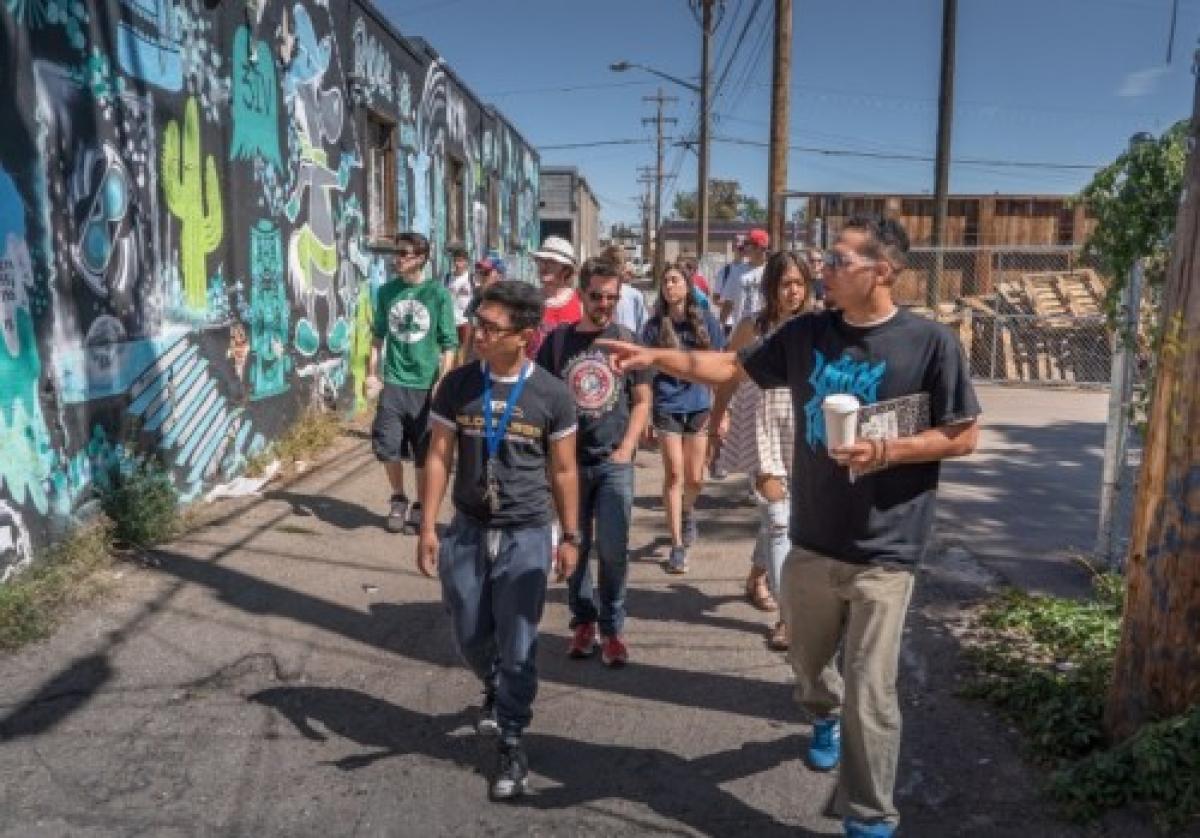First-Year Seminar Classes Hit the Streets of Denver
Global Hip-Hop students take a graffiti tour of downtown Denver

Imagine studying the cultural significance of “Buffy the Vampire Slayer” while touring a local cemetery. Or taking a class on the history of Buddhism, then visiting the Mayu Sanctuary to actually try meditating.
Imagine studying geography in the classroom, and then taking a trip to Red Rocks Park and Amphitheater to survey Denver from higher elevation, or learning about waste and sustainability by touring the Franklin Recycling Center.
For DU’s incoming freshmen, these experiences and others were one part of their introduction to college life.
Each first-year student registers for a first-year seminar (FSEM). The classes cover a variety of topics—from Beyoncé and millennial feminism to a journey through the fractal universe. The class first occurs during orientation week, and at the end of the week, students take a field trip related to their course topic.
Aaron Paige, visiting assistant professor at the Lamont School of Music, is teaching an FSEM called Global Hip-Hop. During the fall quarter, his students will learn about the sociocultural, economic and political significance of the musical style. “Students will engage in a series of collaborative projects with the local Denver hip-hop community throughout the fall quarter,” Paige says.







